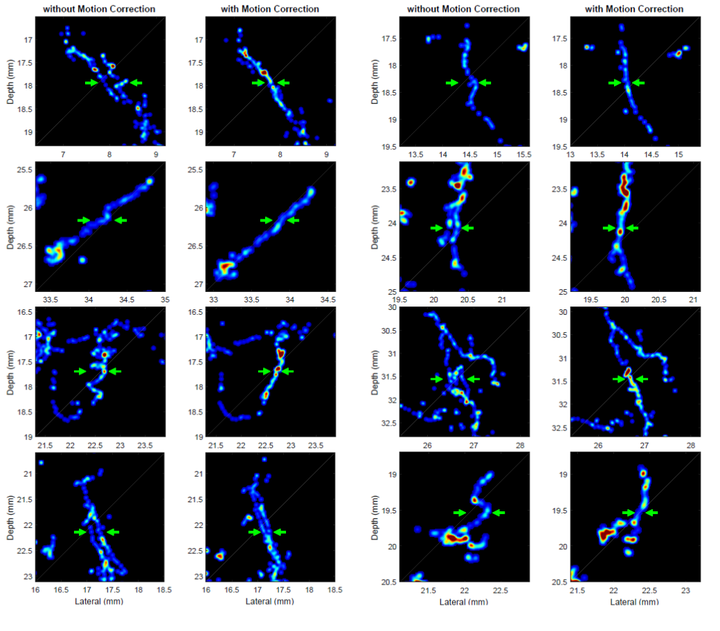Two-Stage Motion Correction for Super-Resolution Ultrasound Imaging in Human Lower Limb

Abstract
The structure of microvasculature cannot be resolved using conventional ultrasound (US) imaging due to the fundamental diffraction limit at clinical US frequencies. It is possible to overcome this resolution limitation by localizing individual microbubbles through multiple frames and forming a superresolved image, which usually requires seconds to minutes of acquisition. Over this time interval, motion is inevitable and tissue movement is typically a combination of large- and small-scale tissue translation and deformation. Therefore, super-resolution (SR) imaging is prone to motion artifacts as other imaging modalities based on multiple acquisitions are. This paper investigates the feasibility of a two-stage motion estimation method, which is a combination of affine and nonrigid estimation, for SR US imaging. First, the motion correction accuracy of the proposed method is evaluated using simulations with increasing complexity of motion. A mean absolute error of 12.2 μm was achieved in simulations for the worst-case scenario. The motion correction algorithm was then applied to a clinical data set to demonstrate its potential to enable in vivo SR US imaging in the presence of patient motion. The size of the identified microvessels from the clinical SR images was measured to assess the feasibility of the two-stage motion correction method, which reduced the width of the motion-blurred microvessels to approximately 1.5-fold.